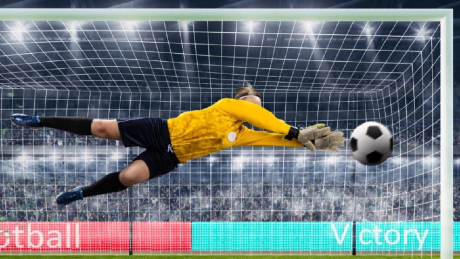Enough of Next Best Action—Do You Know What the Next Worst Action is for Your Customer?

“Defense wins championships.” This old sports adage is true, no matter what sport you follow. I follow soccer and basketball, and it definitely applies to both sports. In fact, my hometown basketball team, the Toronto Raptors, recently won a championship because of good defense.
And this year in soccer (like many others), coaches will be fired, and new ones brought on in mid-season. The common first tactic of these newly hired coaches is to shore up the defense—make themselves harder to beat, stop making errors, and by all means, avoid giving the game away. Once fixed, a solid defense then becomes the platform for a revitalized offense.
Why Don’t Customer Experience Leaders Take the Same Approach?
Many new customer experience (CX) leaders have been hired in the past two years; and like any new leader, they are eager to make their mark on the organization. A lot will choose to play better offense. Some will consider revenue generating activities such as next-best action, cross-sell offers, and next best experience.
Others will opt to play defense via better offense. For example, they’ll turn to predictive churn models to identify customers at risk, so they can make a product offer and “make the relationship stickier.” These are all fine objectives, and many of the programs will be successful, but what about a purely defensive approach?
Next Worst Action (NWA). It sounds like an oxymoron, but it’s actually all about playing a smart defense. It’s about knowing what not to do for your customer in various situations and across journeys—and once you know what not to do for your customer, it’s much easier to determine the likelihood of that action, and then preventing it.
It starts with a simple question: Do you know everything that is happening right now with your individual customers?
- What and when was their last purchase?
- Are shipments late for their orders?
- Have transactions gone well? Is there a transaction that has not been processed smoothly?
- Do they have open service requests or claims?
- Do they have a contract up for renegotiation or renewal?
And questions that determine micro-segments and behavior:
- Did someone else in the household already make a purchase?
- What annoys them?
- What creates friction?
- Have you disappointed key influencers?
- In the B2B world, have they recently had a bad experience with that one key contact, but at their previous job at a different company?
- Did they cancel or return an order for the product you’re about to pitch?
The process of identifying next worst action is really about looking at small groups: very similar customers, their interactions, and transactions, to proactively anticipate behavior and actions across these micro-segments. The next level is understanding influencer networks by layering relationships of individuals closest to them, connecting their behaviors and experiences.
The business benefit of a next worst action approach is tangible. It’s typically measured by Net Promotor Score (NPS), Customer Satisfaction (CSAT) scores, retention rates, and RFM model scores (increasing frequency, recency, and monetary value of purchases).
Customer Experience Leaders Go on the Defense
I recently worked with a CX-focused organization that put this approach in action. When certain scenarios emerged with their customers where they had identified a potential next worst action, they put in place flags and triggers for both marketing and sales. As an example, customers were removed from marketing campaigns for certain customer-product-service combinations: for example, when Customer X had an open service issue, their name was suppressed from marketing for Product # 3. Those same suppression flags were alert triggers and proactive notifications to sales reps.
The business payoff was immediate. By halting offers that had 0% chance of success and could further alienate their customer, they learned that the quality, relevance, and timeliness of offers did matter. This was supported by RFM analysis that showed customers purchasing more than anticipated, after the suppression flags were lifted.
Another client identified an NWA that turned out to have been a “blind spot” because the action happened across channels, and sometimes across related parties (household members and organizations with contacts). By identifying the NWA through detectible indicators of an incident happening, alerts were triggered to the appropriate employee (account managers and agents) with a suggested a course of action. Once again, measurements of both NPS and renewals of product subscriptions indicated a successful approach.
Just like sports teams, focusing on defense often leads to tangible, short-term benefits and then becomes a platform for more strategic or “offensive” strategies.
The How of Next Worst Action
There are few technologies required to establish the right context to identify Next Worst Action. The most foundational one is at the data management level—the ability to synthesize and connect data into a 360-context graph. From that foundation, you can create derived insights such as RFM scoring, interaction patterns, sentiment, event detection, behaviors, and so on.
Deeper analytics and data science can then identify patterns and correlate bad outcomes (e.g., NPS decline, churn, product down-sizing, channel leakage, etc.) with next worst action and the sequence of events that preceded the NWA.
Next, confidence-based perspectives can strike the right balance between data quality and insight discovery by allowing analytics users to play with different match confidence thresholds.
The final step is then adding real-time capabilities to identify customers, leading indicators of NWA, and proactive steps to prevent NWA.
What should you do first? I recommend experimenting so you can best determine how the prevention of NWAs delivers immediate benefits for your company. Start with your data foundation. Make sure that it connects data sets together into a broad and deep customer 360 for context.
Context is very important so you can really start to correlate cause and effect. You may be thinking “I only have a data lake, and it isn’t very connected.” Well, it might be a good time to start experimenting with new 360 technology that can take the data in the lake and turn it into a connected 360.
CX-driven initiatives like Next Worst Action require 360 context graphs—you need a wider variety of trusted, contextual data to answer questions precisely. To learn more about modern Customer 360 technology, click here.








